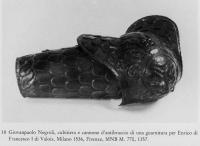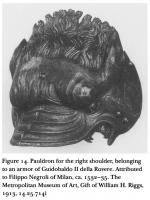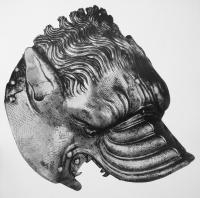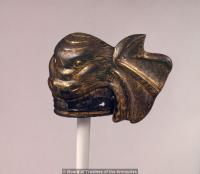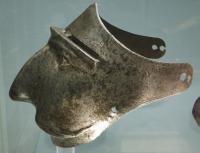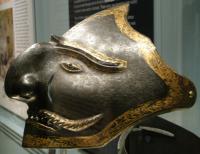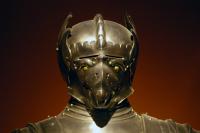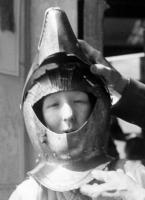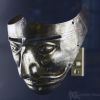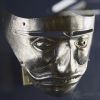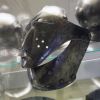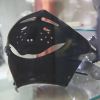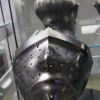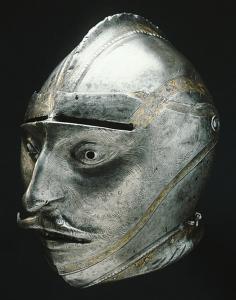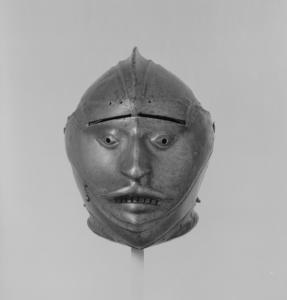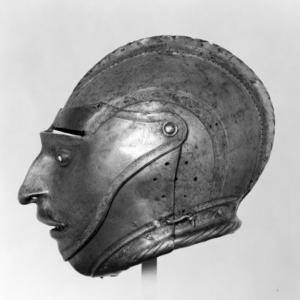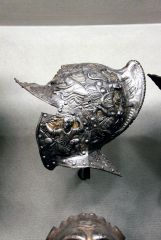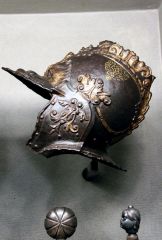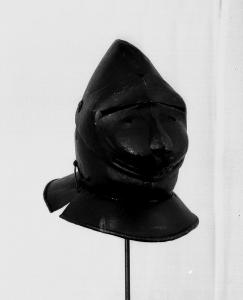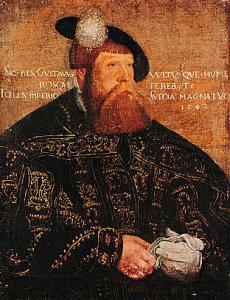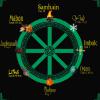
#61

Опубликовано 01 Февраль 2010 - 12:53
#63

Опубликовано 01 Февраль 2010 - 15:22
Это не шлемы, это напрлечники от "некромонгерского" гарнитура, как и верхняя и нижняя часть забрала, Вами запостщенного - http://www.tforum.in...t...st&id=29640. Один наплечник в Метрополитен, а другой в Барджелло, сейчас находятся.
С уважением.
#64

Опубликовано 01 Февраль 2010 - 15:26
С уважением.
#67

Опубликовано 29 Июнь 2010 - 18:45
бывают крепости из-за которых не борются; бывают местности, из-за которых не сражаются;
бывают повеления государя, которые не выполняют.
Позитивная вовлечённость в процесс на основе уважения и конструктивности - отличительная черта коммуникаций внутри организации
#68

Опубликовано 29 Июнь 2010 - 18:56
#70

Опубликовано 10 Июль 2010 - 22:56
Нет, из Хиггинса не подлинный.Паренёк (сейчас ему лет так 80) этот шлем с удовольствием примерил.
#73

Опубликовано 17 Сентябрь 2012 - 09:37
http://www.tforum.in...showtopic=35998 (Аукционный "бевор")
http://www.tforum.in...showtopic=33174 (Похожие шлемы из Wallace Collection и из Эрмитажа)
#77

Опубликовано 12 Март 2013 - 18:24
Шлем с Вашего последнего фото - вот мне кажется что там не сколько гротеск, сколько портретное сходство.
И профиль носа вполне "бытовой",и вообще, как то буднично смотрится.... Очень жаль что проверить данный вариант невозможно....
#79

Опубликовано 03 Апрель 2013 - 19:35
Это шлем Густава Вазы.Шлем с Вашего последнего фото - вот мне кажется что там не сколько гротеск, сколько портретное сходство.И профиль носа вполне "бытовой",и вообще, как то буднично смотрится.... Очень жаль что проверить данный вариант невозможно....
#80

Опубликовано 03 Сентябрь 2013 - 14:22
фото полного доспеха от Негролли
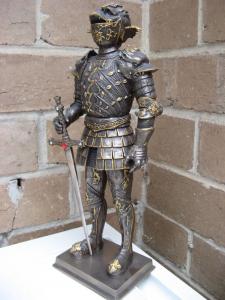
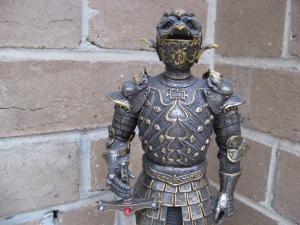
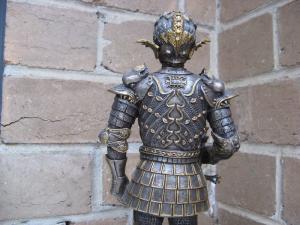
http://asianmil.type...-of-armour.html
A beautiful set of armour
In mid-2008 we visited Italy and while wandering around Pisa we came across a shop that sold chess sets. Within the shop was also a number of statues of suits of armour. I kept coming back to the statue that represented the suit of armour supposedly owned by Guidobaldo II Della Rovere, Duke of Urbino made by Filippo Negroli in Milan. It was an example of what is described as ‘heroic armour’ since it had no place on battlefields but was for parades and tournaments. I ended up buying the statue that I have photographed below.
Who was Guidobaldo II Della Rovere, Duke of Urbino
The Duke has an entry in Wikipedia. He was born on 2 April 1514. He became the Duke of Urbino when his father Francesco Maria I della Rovere was assassinated in 1539. In 1546, in a move reminiscent of his father he received a condotta (a military contract) from the Republic of Venice. His star continued to rise with his appointment as the Papal Governor of Frano and the Commander in Chief of Papal Forces, as well as the Prefect of Rome. The King of Spain hired him in 1559 to assist with the war against the Ottoman Turks. Off the battlefield he was a hard ruler with his tax payers revolting because of the amount of money that they were required to pay. He suppressed the riot heavily. In 1574 he fell ill during a voyage and eventually died being replaced by his son.
Who was Filippo Negroli
Filippo Negroli also has a Wikipedia entry. He was born around 1510 in Milan. He worked for a very long time in the family workshop with his three brothers before the family started to take on non-family members. The first work identified as his was probably made about 1532. It is possible that at he became ill and had to leave the workshop in 1557. He did not resume armour making but turned to other metal work before passing away on 24 November 1579. During his time as an armour maker he became very famous for his parade and heroic armour.
What is the suit composed of
The statue undoubtedly does not do the harness justice and nor do my photos do the statue justice. I have used as my source, Heroic Armour of the Italian Renaissance, pp136-50.
The helmet bowl is a single piece of metal. The creature/s are not clear but there appears to be a snout with two eyes over it and horns curling up form above the eyes. There is wavy hair matted to the side of the head in guilt and iron. Eight teeth protrude from the roof of the jaw, with two at the front and the rest set further back. The rear almost seems to have a human face peering out from the fringe of hair at the back and from scales along the bottom with a stern frown of foreboding. On the top of the helmet rests what could be described as the off-spring of the beast that is the model for the helmet. Its snout resting between the eyes of the helmet and the body arching over the helmet to its tail down the back of the head. Two bat wing like cheek pieces are affixed to finish off the helmet. A picture of the helmet is available on the Hermitage Museum website.
The bottom half of the helmet is simpler but left space for the wearer to see out of. This may be supposition as the paintings in the source book do not show the bottom of the helmet.
There is still a breast plate in existence that has movable gussets at the arms and two waist plates. There is a small inscription plate on the font just below the neck that says NVLLA BIBAM LAETHES OBLIVIA FLVMINE IN IPSO. There are spiky bat-like wings, scales, etc around the chest plate. The waist-belt has stylised leaves while beneath the waste there are rectangular segments with gilt edges joined together. The shoulder pieces are like monster dolphins covering the top of the arms.
The leg and foot armour are probably impressions, as there is little available information on the greaves and shoes of the armour and paintings do not show the lower limbs.
It is famous because of its beauty and well documented pieces. That said, may questions are yet to be resolved.
What is the suit’s history
There was no clear date for the construction of the armour. It is attributed to the Duke of Urbino because it appears in a miniature painting of the Duke. A couple of generations later the armour appeared to be mentioned in an inventory of the Della Rovere family when a female descendant was moving to Florence in 1630 for marriage. The Medici family of Florence catalogued the armour about a decade later although with different descriptions.
In the 1770s the Medici family sold off their armour collection to make room for other collections. This led to a break-up of the armour amongst several collectors from Russia to the USA.
Where is it now
Given the history listed above it is not surprising to learn that the armour appears to have only five remaining confirmed pieces split between four collections in three different cities; St Petersburg, Florence and New York. Those pieces were brought together in the late 1990s for a special exhibition at the New York Metropolitan Museum of Art for which the book, Heroic Armor of the Italian Renaissance, was the catalogue.
Изменено: Idot, 03 Сентябрь 2013 - 14:30
Также с меткой «Гротескные доспехи, 16 век, xvi век»
Общие →
Конец Ренессанса, Новое Время (XVI-XVII вв.) →
Щит у стрельцов?Автор: Dankon • Дата: 29 Май 2017 |
|
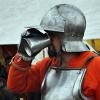
|
||
Торговые Ряды →
Наступательное и защитное вооружение →
Колчаны 14-16 веков продамАвтор: Veraida • Дата: 29 Мар 2016 |
|

|
||
Специальные →
Гардеробная комната - Восток →
Собрание гравюр осман и союзников, 16й векАвтор: sasa • Дата: 24 Авг 2015 |
|

|
||
Специальные →
Гардеробная комната - Запад →
Венгрия головной убор(нужна помощь)Автор: mist • Дата: 23 Фев 2015 |
|
|
||
Торговые Ряды →
Костюм, украшения и аксессуары →
Фальтрок на 1525Автор: Bernard • Дата: 14 Дек 2014 |
|
|
0 пользователей читают эту тему
0 пользователей, 0 гостей, 0 невидимых




